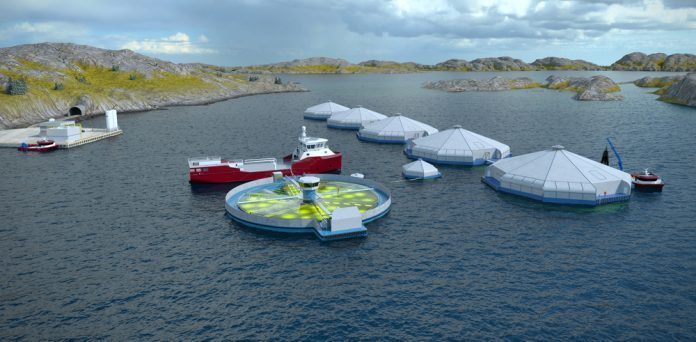Bergen-based start-up, Biolaks, says it has a production technology that can be placed in a country’s waterways that might not normally be right for farming.
The idea came to light as a government deadline passed for novel Norwegian development licenses in Oslo last week. Biolaks applied for five of these permits to try out new production ideas, most of them designed for operations well offshore. In Canada, for comparison, a development license defines a five-year period during which the idea is ramped up to commerciality.
Impressed by Biolaks, 20-year-old Norwegian research business, LetSea — another of Norway’s lucrative “trial” facilities that earned 323 million kroner in turnover in 2016 — has bought 50 percent of Biolaks’s stock, and is now understood to share ownership with Feeder International, which also owns Biosystems, another entity controlled by the ubiquitous Jan Erik Kyrkjebo.
The Biolaks application is based on “circular economic aquaculture” which its developers warn requires “major investments” for its “high level of innovation”. The benefits could be that countries and coastal regions not previously deemed suitable might now have a way into aquaculture, opening the way for others with a littoral that might not be as sheltered or aerated as Norway, Canada, Chile or Scotland’s.
“This technology solves several problems at the same time,” Kyrkjebø, chairman of Biolaks, said in a statement, adding, “Closed cages are physically linked to a bioreactor via new subsea installations. Through probe measurements, continuous monitoring and mechanical devices, production can be controlled and optimized while using by-products locally. It provides better environmental control and high transport savings.”
“Biological materials and carbon-dioxide from the production of farmed fish in closed mats are collected and become oxygen and raw materials, which can again be used in the production of farmed fish,” a statement explained, adding that the process occurs “in a bioreactor by photosynthesis and the use of microalgae”.
“The bioreactor converts emissions and waste into oxygen, omega-3 fatty acids and other nutrients,” a statement said.
It is hoped the “closed loop” system also “minimizes” lice by closing them out while disinfecting “all water taken into the cages”.

